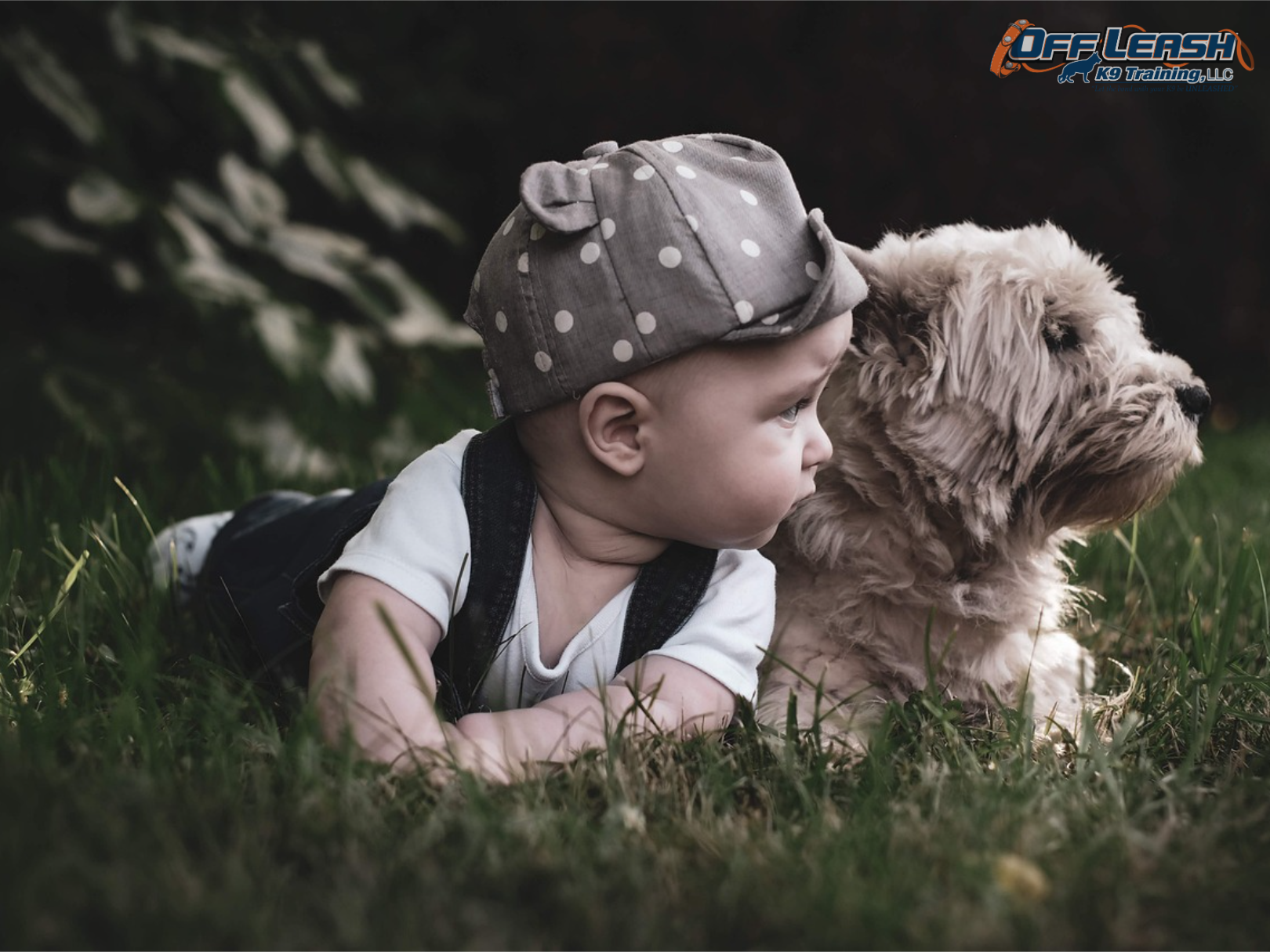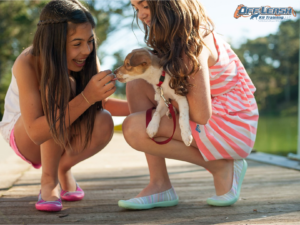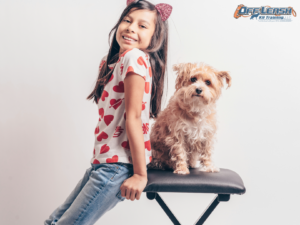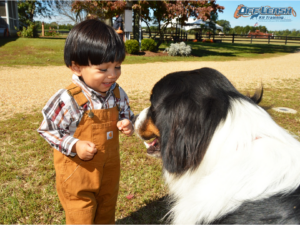Teaching children respect and boundaries when interacting with dogs is essential for preventing accidents, promoting positive relationships, and instilling empathy and responsibility.
Introduction: Importance of Teaching Children Respect and Boundaries When Interacting with Dogs
Fostering a culture of respect and understanding between children and dogs from an early age is pivotal in mitigating accidents and cultivating enriching relationships. This foundational education transcends mere safety precautions; it embeds a deep-rooted sense of empathy and responsibility towards animals in the hearts of young individuals. By guiding children on the appropriate manners to approach, interact with dogs, and share space with dogs, we not only safeguard their physical well-being but also enhance the quality of their companionship, ensuring that their interactions are characterized by mutual respect and joy. Such education is essential in bridging the communication gap between children and dogs, allowing them to coexist harmoniously within the same environment. Through consistent teaching and positive reinforcement, children learn to read and respect the subtle cues dogs give, fostering a safe and nurturing space for both to thrive. As we embark on this enlightening journey, it becomes clear that the lessons learned in treating animals with kindness and understanding extend far beyond the confines of our homes, nurturing compassionate and mindful individuals for the future.
 Understanding Dogs’ Boundaries
Understanding Dogs’ Boundaries
Teaching children to interpret the nuanced language of dogs’ body language is a foundational step in fostering safe and respectful interactions. Dogs often communicate their discomfort or stress through subtle signals such as lip licking, yawning, showing the whites of their eyes, or even attempting to move away from a situation. These behaviors, easily overlooked by the untrained eye, are crucial indicators that children should learn to recognize. Through careful observation and guidance, children can learn to understand these signals, helping to prevent misunderstandings that could lead to negative interactions. Supervised encounters between kids and dogs not only serve as practical learning sessions but also help in laying down the groundwork for trust and respect. This mutual understanding is paramount for cultivating a bond where both the child and the dog feel comfortable and valued.
Moreover, establishing clear boundaries right from the start is essential for ensuring the safety and well-being of both children and dogs. This is especially critical in households with babies, where the unpredictability of young children’s movements can be stressful for dogs. By creating and maintaining these boundaries, parents and guardians can prevent potential accidents and teach children the importance of respecting a dog’s space. Strategies such as introducing supervised, gentle interactions and providing dogs with their own safe retreat away from the hustle and bustle of family life are effective in promoting a peaceful coexistence. Remember, the goal is to nurture a relationship based on mutual respect and understanding, ensuring that interactions are positive and enriching for both the child and the dog. It is important to set boundaries between babies and dogs for safety.
Benefits of Growing Up with Dogs
Growing up with dogs can have a profound impact on a child’s development, both emotionally and physically. The presence of a canine companion in a child’s life often leads to lower stress levels and a more robust immune system. This is attributed to the companionship dogs offer, as well as the outdoor activities they encourage, which expose children to various environments that naturally boost their immunity. Moreover, the responsibility of caring for a dog teaches children valuable life skills such as reliability, compassion, and patience. These early lessons in responsibility prepare them for future roles in their personal and professional lives.
In addition to the practical benefits, the emotional and social growth children experience when growing up with dogs is immeasurable. Having a dog helps children develop empathy and understanding towards others, as they learn to read and respond to their pet’s needs and emotions. This interaction with pets also enhances a child’s social skills, making them more confident and outgoing. The bond that forms between a child and their dog is unique and powerful, offering a sense of security and unconditional love that can be especially comforting during challenging times. The joy and wonder of sharing one’s life with a dog create memories that last a lifetime, positively shaping the child’s character and outlook on life. These benefits highlight the importance of fostering a respectful and caring relationship between children and dogs, ensuring a safe and enriching environment for both.
Preventing Dog Aggression
Preventing dog aggression involves more than just teaching children the right way to approach dogs; it’s about fostering an environment of mutual respect and understanding from an early age. When children learn to approach dogs calmly, avoiding sudden movements or loud noises, they’re much less likely to trigger a defensive or aggressive response from the dog. This calm approach should be coupled with education on the importance of respecting the dog’s personal space, such as not disturbing them while they’re eating or sleeping, which are common triggers for dog aggression.
 Teaching Respect and Boundaries
Teaching Respect and Boundaries
Teaching children the importance of respect and boundaries in their interactions with dogs is not just about safety; it’s about fostering a relationship based on mutual understanding and trust. Children are naturally curious and love to explore with their hands, which is why it’s crucial to guide them on how to properly engage with dogs. By encouraging interactive play under supervision, children learn to read a dog’s body language and respond appropriately. For instance, teaching them that a wagging tail doesn’t always mean a dog is happy and eager to be petted can prevent misunderstandings and accidents. This nuanced understanding helps children appreciate the complexities of animal emotions, leading to deeper empathy and respect.
Moreover, clear and consistent rules about how and when to approach dogs play a vital role in establishing boundaries. Children should learn the importance of not interrupting a dog’s mealtime or rest, as these are moments when dogs are more likely to react negatively to being bothered. Demonstrating gentle petting techniques and explaining why certain areas, like the ears and tail, are off-limits unless the dog initiates contact, reinforces these boundaries further. Beyond just safety, these lessons in respect and boundaries prepare children for positive and enriching relationships with dogs, emphasizing kindness and understanding as foundational values in their interactions. By integrating these practices into daily life, families can ensure a harmonious coexistence between children and their canine companions, laying the groundwork for a lifetime of mutual respect and love.
Creating Safe Spaces
Creating safe spaces for dogs within a household where children are present is more than just a measure of comfort; it’s a crucial strategy for preventing stress and potential conflicts that could arise from the natural energy and unpredictability of children’s activities. By establishing specific areas in the home where dogs can retreat, relax, and be undisturbed, families can foster a sense of security and tranquility for their pets. These designated zones not only offer dogs a sanctuary from the daily bustle but also serve as a clear signal to children about respecting the dog’s need for privacy and rest. For instance, setting up a cozy corner with the dog’s bed, favorite toys, and perhaps a barrier like a baby gate can effectively communicate to children that this area is solely for the dog’s use.
Moreover, educating children on the importance of recognizing a dog’s signals for needing space is vital for cultivating a harmonious living environment. This education can be incorporated into daily routines, ensuring that interactions between children and dogs are respectful and mindful of each other’s boundaries. For example, parents can teach children to observe the dog’s body language and to understand that certain behaviors, such as retreating to its designated safe zone, mean the dog wishes to be left alone. Incorporating structured times for interactions as well as quiet times can help prevent overstimulation for both the dog and the children, ensuring that their time together is enjoyable and enriching. This balanced approach not only reinforces the concept of mutual respect but also deepens the bond between children and their canine companions, promoting a lifelong friendship grounded in understanding and empathy.
Conclusion: Promoting Safe and Respectful Interactions Between Children and Dogs
Cultivating an atmosphere of respect and understanding between children and dogs is a cornerstone of fostering safe and harmonious relationships within the family. This effort not only ensures the well-being of our canine companions but also significantly contributes to the personal development of children, teaching them invaluable lessons in empathy, responsibility, and mutual respect. By emphasizing the importance of boundaries and proper interaction techniques, we lay the foundation for a lifetime of positive and fulfilling relationships between children and dogs. It is here that Off Leash K9 Training of Tucson excels, offering specialized training programs that cater to the unique needs of families aiming to enhance the bond between their children and pets. Their approach, which combines obedience training with an understanding of dog behavior, is designed to address common challenges and promote respectful interactions.


 Understanding Dogs’ Boundaries
Understanding Dogs’ Boundaries
 Teaching Respect and Boundaries
Teaching Respect and Boundaries